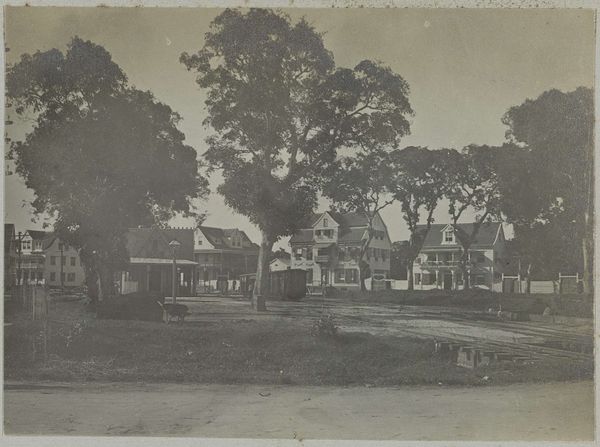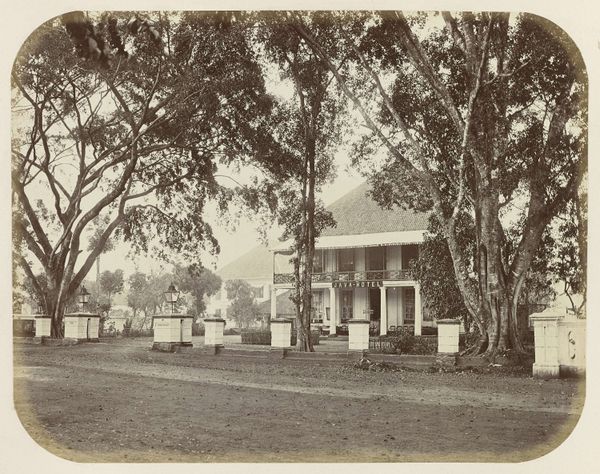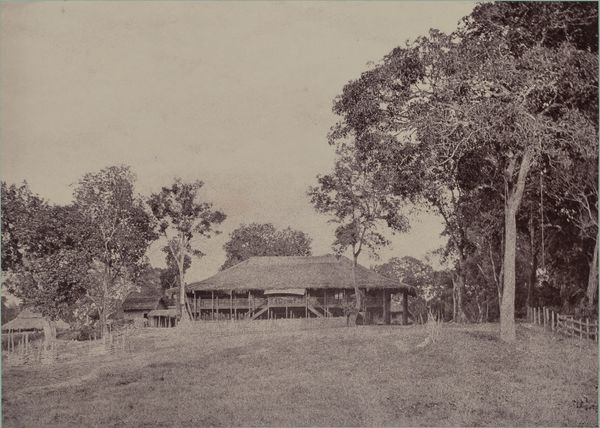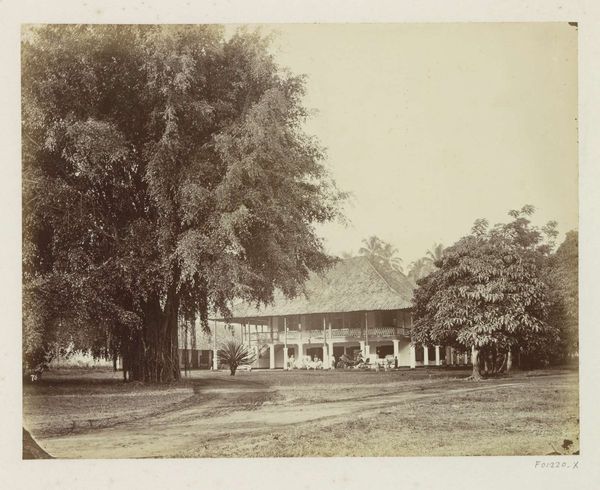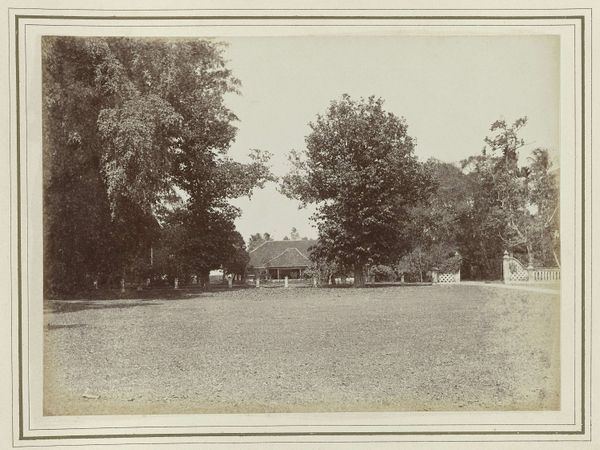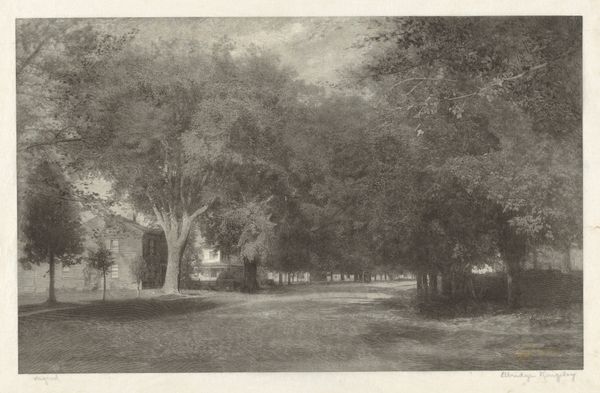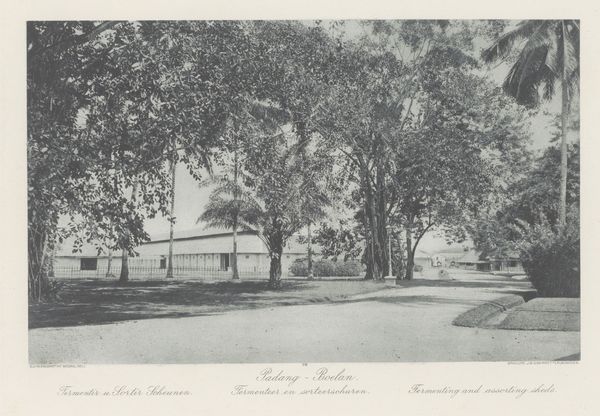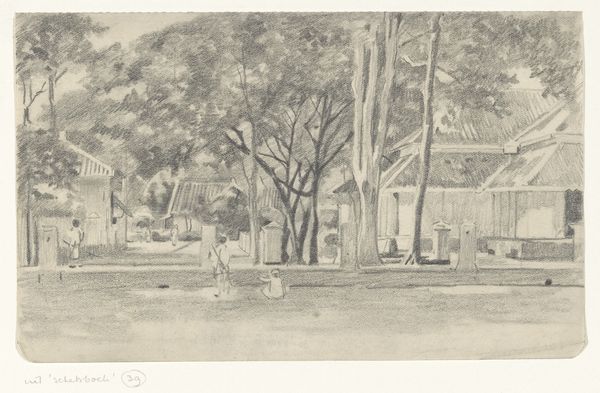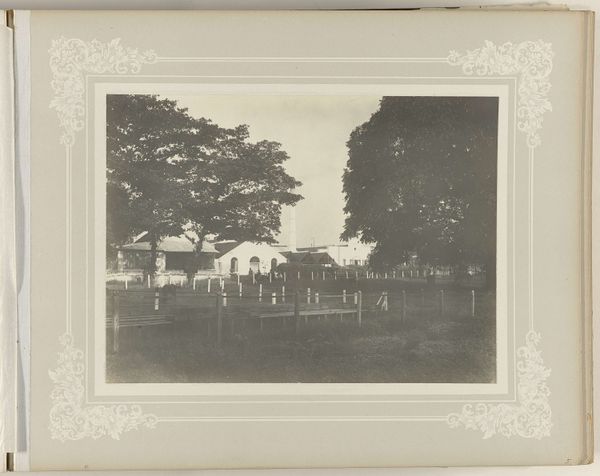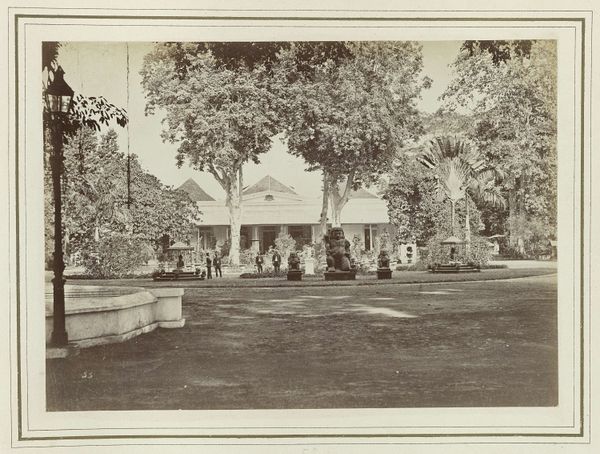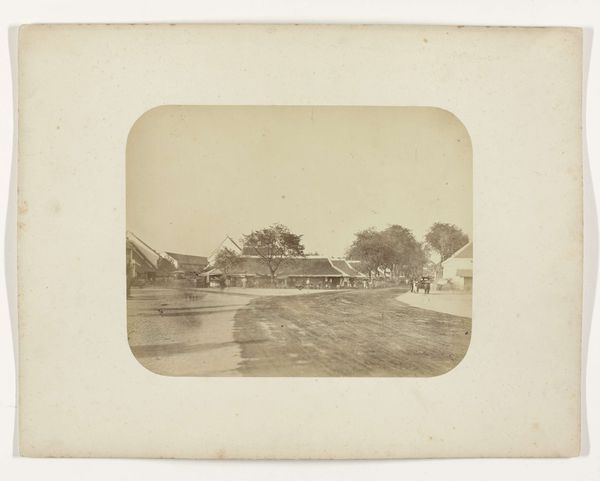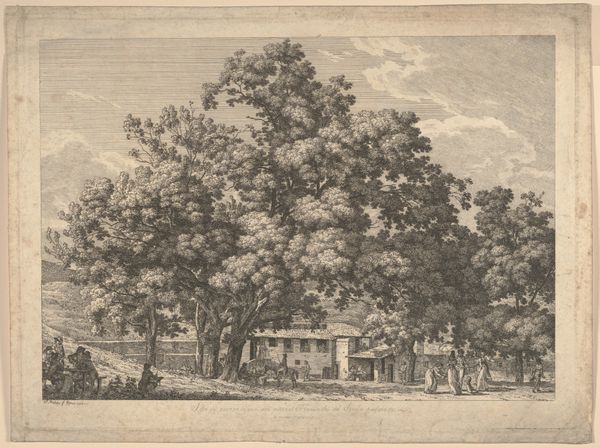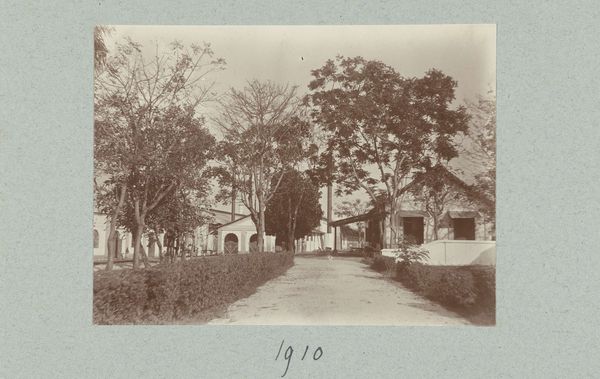
cyanotype, photography
#
water colours
#
landscape
#
cyanotype
#
photography
#
coloured pencil
#
cityscape
#
realism
Dimensions: height 81 mm, width 112 mm
Copyright: Rijks Museum: Open Domain
Curator: Welcome. Before us hangs a photograph by Hendrik Doijer, capturing Vaillantsplein in Paramaribo sometime between 1903 and 1910. What’s your immediate impression? Editor: It's like stepping into a hazy dream, all washed in this antique cyan blue. The buildings and trees… everything feels delicate, almost ephemeral, as though a strong wind could just blow the scene away. It feels still and otherworldly. Curator: Indeed. The cyanotype process lends it that distinctive aesthetic, but beyond the beauty, this image offers us insight into a specific time and place under colonial rule. Editor: Colonial rule? Does the photograph give us any clues to the socio-political atmosphere back then, because, visually, the composition looks quite tranquil? The well-ordered buildings and generous foliage could give one an idealistic view of a colonial town! Curator: Precisely! It’s easy to romanticize, but photography was frequently used to promote particular colonial narratives, especially those illustrating "progress" and orderly civic life. Consider where and why these images were distributed. Were they postcards to entice investment? Documents to demonstrate governance? The image-making process was always tied to its sociopolitical context. Editor: Hmmm. Well, let’s leave that to the sociopolitical scholars! Personally, what hits me about the technique is this wonderful tonal range within the single colour, created with the cyanotype technique and other media. Curator: Quite so. It speaks to Doijer’s skill and the photographic norms of the time, when such tinted photos helped people accept photography as "art". Doijer had actually already begun to dabble in photography and photo manipulation 20 years prior to his activity between 1903 and 1910 which provides us with another piece to this intriguing colonial puzzle! Editor: Ultimately, that balance between technical finesse and the subject is what captivates me. Doijer gives us space to contemplate our presence. I think about all those untold stories and everyday moments occurring behind those walls. This blue-tinted image freezes time. Curator: Well put. The photograph serves as both a document of history and a delicate space for contemplation, inviting conversation beyond what's immediately visible. Editor: So, maybe not quite as dreamy as it seems!
Comments
No comments
Be the first to comment and join the conversation on the ultimate creative platform.
